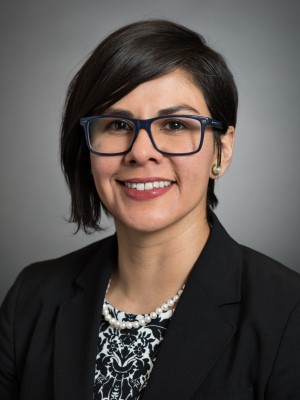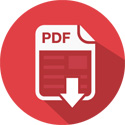2022-04
Triple-Negative Breast Cancer Awareness
Sponsored by Rep. Jessica González (TX)
Reported to the Caucus by the NHCSL Healthcare Task Force
Rep. Alma Hernández (AZ), Chair
Unanimously ratified by the Caucus on December 1, 2022
Triple-Negative Breast Cancer is especially dangerous
WHEREAS, breast cancer is among the most commonly diagnosed cancer and the second leading cause of cancer death among women in the United States;[1] and,
WHEREAS, approximately 287,850 women will be diagnosed with breast cancer and over 43,000 will die from this malignancy in 2022, while 2,710 men will also be diagnosed and over 500 will die from it;[2] and,
WHEREAS, Triple-Negative Breast Cancer (TNBC) is a form of breast cancer that lacks two hormone receptors and a growth factor receptor (HER2) found in other types, and which are common targets for hormone therapy and drugs, making chemotherapy the main systemic treatment option;[3] and,
WHEREAS, TNBC accounts for about 10-20% of all diagnosed breast cancer cases in the United States;[4] and,
WHEREAS, due to its aggressive behavior, TNBC grows quickly and is more likely to have spread by the time it is detected and is more likely to come back after treatment than other types of breast cancer;[5] and,
WHEREAS, patients diagnosed with metastatic Triple Negative Breast Cancer have a less than 30% chance of surviving past five (5) years;[6] and,
Hispanic women are at higher risk
WHEREAS, US-born Hispanics have a higher risk of developing breast cancer in general than immigrant Hispanics;[7] and,
WHEREAS, TNBC has a higher prevalence among younger women, Black and Hispanic women, women with type-2 diabetes or carrying excess weight in the abdomen area, and those with BRCA1 mutations;[8],[9], [10], [11],[12] and,
WHEREAS, BRCA mutations appear to be more common in Hispanic women compared to non-Hispanic white women;[13] and,
WHEREAS, there are specialized therapies called poly(ADP-ribose) polymerase (PARP) inhibitors which can help some patients with BRCA1 mutations live longer, but they require screening for the BRCA1 mutation biomarkers, which may not all be as susceptible, and carry the risk of developing resistance, a problem for which research is ongoing;[14] and,
WHEREAS, Hispanic women are less likely to receive genetic counselling or genetic testing for BRCA mutations that can cause Triple Negative Breast Cancer, even when they have strong family histories of cancer;[15] and,
WHEREAS, the Covid-19 pandemic has decreased access to necessary routine medical check-ups; and,
WHEREAS, Hispanic women are more likely to have larger tumors by the time they are diagnosed with breast cancer in general;[16] and,
WHEREAS, compared with non-Hispanic white women, Hispanic women are also more likely to be diagnosed at later stages of TNBC; less likely to receive guideline-adherent care;[17] and, at a greater risk of receiving inappropriate primary surgical and radiation breast cancer treatment;[18] and,
WHEREAS, Hispanic women have a higher risk of mortality from Triple Negative Breast Cancer than compared to non-Hispanic white women,[19] and studies have shown that disease-specific mortality rates are often higher if patients have Medicaid or Medicare or are lower socio-economic status;[20], [21], [22] and,
WHEREAS, advances in breast cancer screening and treatment over the last few decades have reduced the overall breast cancer mortality rate, yet the disproportionate impact of TNBC on racial and ethnic minority communities raises considerations about the underlying determinants driving the disparities.
THEREFORE, BE IT RESOLVED, that the National Hispanic Caucus of State Legislators supports legislation to reduce disparities in early detection and survival of Triple Negative Breast Cancer by:
- Improving education and awareness through health promotion initiatives targeting underserved communities disproportionately impacted in collaboration with trusted messengers and community groups, especially given the reduction in routine check-ups provoked by the Covid pandemic; and,
- Allocating temporary additional resources to boost breast cancer screening rates, and other cancer screening rates, negatively impacted by the pandemic; and,
- Ensuring equitable access and affordability of supplemental and diagnostic breast imaging measures beyond mammography (e.g., ultrasound, MRI) by requiring insurers to cover recommended breast imaging without patient out-of-pocket costs; and,
- Supporting access to treatment and associated care by limiting utilization management techniques that place extreme burden on patients; and,
- Requiring state collection of population-based cancer registry data to include the collection of breast cancer data by subtype to guide policy decisions and assess disparities in outcomes; and,
- Setting screening objectives and targets specific to TNBC in state comprehensive cancer control (CCC) plans to improve accountability and reduce late-stage diagnosis of TNBC – such as supplemental imaging to better detect TNBC, equitable screening amongst populations who are at a greater risk for TNBC, and referrals for genetic counseling and testing without patient out-of-pocket costs.
THE HEALTHCARE TASK FORCE UNANIMOUSLY RECOMMENDED THIS RESOLUTION TO THE EXECUTIVE COMMITTEE FOR APPROVAL. THE EXECUTIVE COMMITTEE UNANIMOUSLY APPROVED THIS RESOLUTION AT ITS MEETING OF AUGUST 12, 2022.
THE NATIONAL HISPANIC CAUCUS OF STATE LEGISLATORS UNANIMOUSLY RATIFIED THIS RESOLUTION ON DECEMBER 1, 2022 AT ITS ANNUAL MEETING IN LAS VEGAS, NEVADA
[1] American Cancer Society. Cancer Facts and Figures 2017, https://www.cancer.org/content/dam/cancer-org/research/cancer-facts-and-statistics/annual-cancer-facts-and-figures/2017/cancer-facts-and-figures-2017.pdf
[2] American Cancer Society. Cancer Facts and Figures 2022 https://www.cancer.org/content/dam/cancer-org/research/cancer-facts-and-statistics/annual-cancer-facts-and-figures/2022/2022-cancer-facts-and-figures.pdf
[3]American Cancer Society, Treatment of Triple-negative Breast Cancer. https://www.cancer.org/cancer/breast-cancer/treatment/treatment-of-triple-negative.html
[4] Kumar P, Aggarwal R. An overview of triple-negative breast cancer. Arch Gynecol Obstet. 2016;293(2):247-269.
doi:10.1007/s00404-015-3859-y
[5]https://www.cancer.org/cancer/breast-cancer/understanding-a-breast-cancer-diagnosis/types-of-breast-cancer/triple-negative.html, accessed 3/17/21
[6] Bauer KR, et al. Cancer. 2007 May 1;109(9):1721-8. doi: 10.1002/cncr.22618
[7] Nahleh, Z., S. Otoukesh, A. K. Dwivedi, I. Mallawaarachchi, L. Sanchez, J. S. Saldivar, et al. (2015). Clinical and pathological characteristics of Hispanic BRCA-associated breast cancers in the American-Mexican border city of El Paso, TX. Am. J. Cancer Res. 5:466–471.
[8]https://seer.cancer.gov/statfacts/html/breast.html, accessed 3/17, 20
[9] Plasilova, ML, et al (2016) Medicine, 95(35), e4614. https://pubmed.ncbi.nlm.nih.gov/27583878/
[10]https://www.breastcancer.org/symptoms/diagnosis/trip_neg, accessed 3/17/20, (ref)
[11] Yang XR, Chang-Claude J, Goode EL, et al. Associations of breast cancer risk factors with tumor subtypes: a pooled analysis from the Breast Cancer Association Consortium studies. J Natl Cancer Inst. 103(3):250-63, 2011
[12] American Cancer Society. Breast Cancer Facts & Figures 2019-2020. https://www.cancer.org/content/dam/cancer-org/research/cancer-facts-and-statistics/breast-cancer-facts-and-figures/breast-cancer-facts-and-figures-2019-2020.pdf
[13] Carlos A Castaneda, Miluska Castillo, Cynthia Villarreal-Garza (2018). Genetics, tumor features and treatment response of breast cancer in Latinas. Breast Cancer Management 2018 7:1. https://www.futuremedicine.com/doi/10.2217/bmt-2017-0013
[14] Wicks Andrew J., Krastev Dragomir B., Pettitt Stephen J., Tutt Andrew N. J. and Lord Christopher J. Opinion: PARP inhibitors in cancer—what do we still need to know? (Open Biol. 2022) 12220118220118
http://doi.org/10.1098/rsob.220118
[15] The same study also found lower rates of genetic testing among Black women. Levy, D. E., Byfield, S. D., Comstock, C. B., Garber, J. E., Syngal, S., Crown, W. H., & Shields, A. E. (2011). Underutilization of BRCA1/2 testing to guide breast cancer treatment: Black and Hispanic women particularly at risk. Genetics in Medicine, 13(4), 349–355. https://doi.org/10.1097/GIM.0b013e3182091ba4; Armstrong, K., Micco, E., Carney, A., Stopfer, J., & Putt, M. (2005). Racial differences in the use of BRCA1/2 testing among women with a family history of breast or ovarian cancer. JAMA, 293(14), 1729–1736. https://doi.org/10.1001/jama.293.14.1729 this entire citation is so poorly done and confusing it looks like three different citations in one.(maybe delete second one in here since first is relevant)
[16] Chakraborty, S., Smith, L., Ganti, A. K., Bonthu, N., Shimizhu, T., & Batra, S. K. (2014). Breast cancer survival of Hispanic women in the USA is influenced by country of origin. Asia-Pacific journal of clinical oncology, 10(2), 124–132. https://doi.org/10.1111/ajco.12063
[17] Lu Chen and Christopher I. Li, Racial Disparities in Breast Cancer Diagnosis and Treatment by Hormone Receptor and HER2
Status, Cancer Epidemiol Biomarkers Prev November 1 2015 (24) (11) 1666-1672; DOI: 10.1158/1055-9965.EPI-15-0293
[18] Ooi SL, Martinez ME, Li CI. Disparities in breast cancer characteristics and outcomes by race/ethnicity. Breast Cancer Res Treat. 2011 Jun;127(3):729-38. doi: 10.1007/s10549-010-1191-6. Epub 2010 Oct 7. PMID: 21076864; PMCID: PMC3081535.
[19] Rey-Vargas, L., Sanabria-Salas, M. C., Fejerman, L., & Serrano-Gómez, S. J. (2019). Risk factors for triple-negative breast cancer among Latina women. Cancer Epidemiology, Biomarkers & Prevention, 28(11), 1771-1783. https://cebp.aacrjournals.org/content/28/11/1771; Axelsen, K, Jayasuriya, R, Zacharko, C, Karmo, M. (2021, October). Disparities in screening and diagnosis for triple negative breast cancer. Charles River Associates. https://media.crai.com/wp-content/uploads/2021/10/04132314/CRA-Gilead-Disparities-in-Screening-and-Diagnosis-TNBC.pdf; United States Cancer Statistics: 1999–2014 Incidence and Mortality Web-based Report at: http://www.cdc.gov/USCS
[20] The same study also found a lower likelihood for non-Hispanic Black patients and patients of lowest and lower-middle socioeconomic status. Ubbaonu C, Chang J, Ziogas A, et al. Disparities in the receipt of National Comprehensive Cancer Network (NCCN) guideline adherent care in triple-negative breast cancer (TNBC) by race/ethnicity, socioeconomic status, and insurance type. Presented at: ASCO20 Virtual; May 29-31, 2020. Accessed June 15, 2020. https://meetinglibrary.asco.org/record/185233/abstract
[21] Cho B, Han Y, Lian M, et al. Evaluation of Racial/Ethnic Differences in Treatment and Mortality Among Women With Triple-Negative Breast Cancer. JAMA Oncol. 2021;7(7):1016–1023. doi:10.1001/jamaoncol.2021.1254
[22] American Cancer Society, Treatment of Triple-negative Breast Cancer. https://www.cancer.org/cancer/breast-cancer/treatment/treatment-of-triple-negative.html


